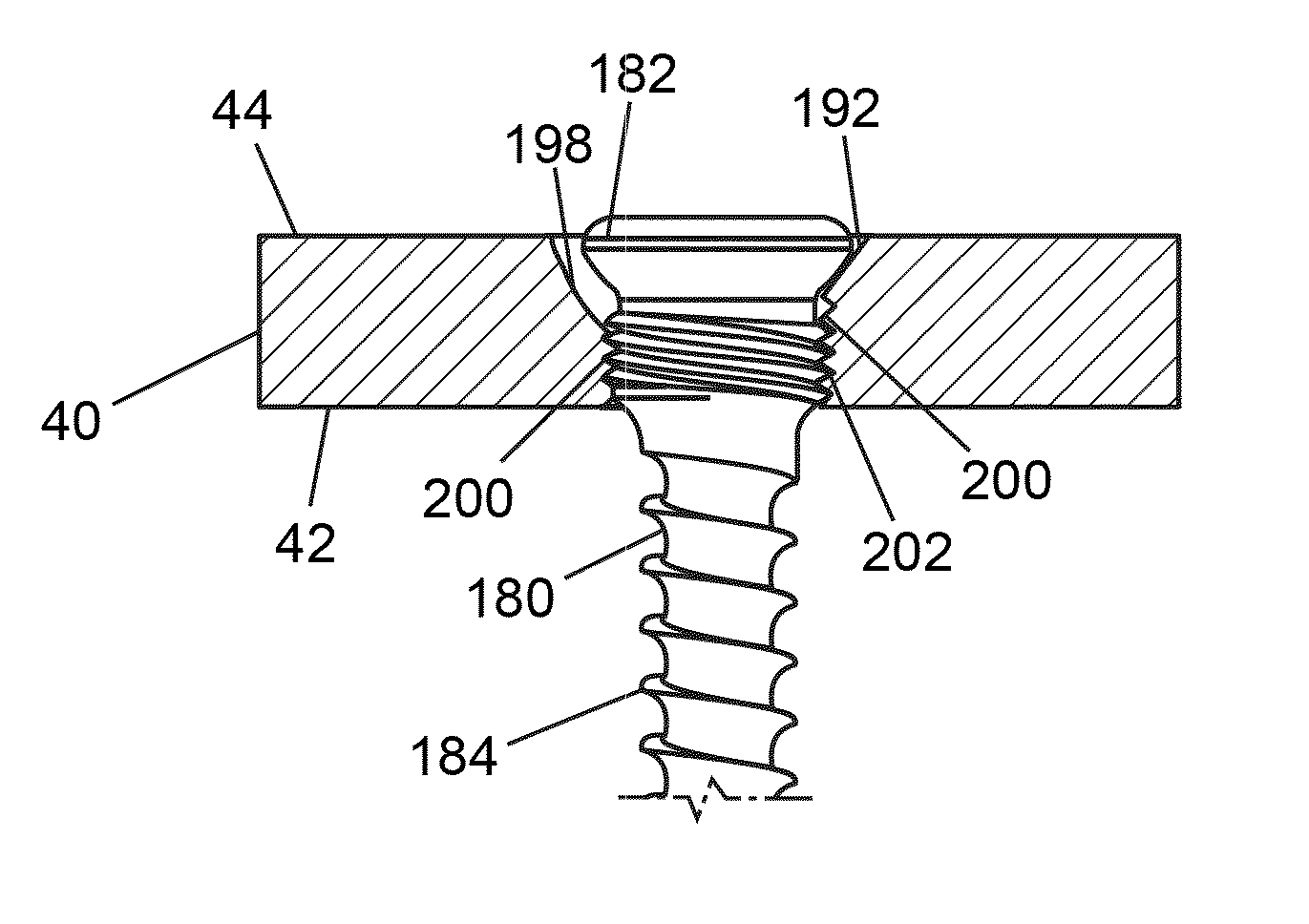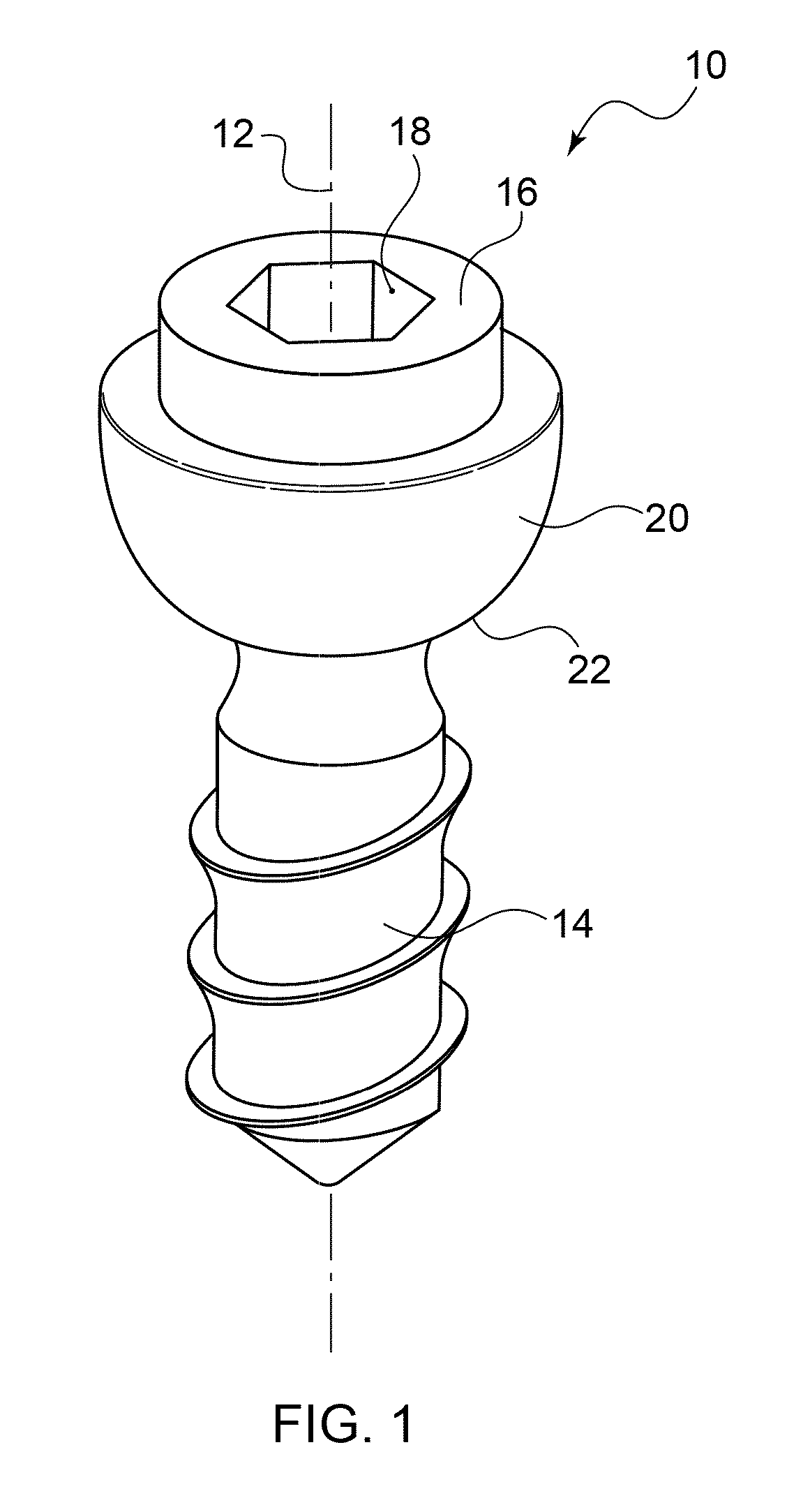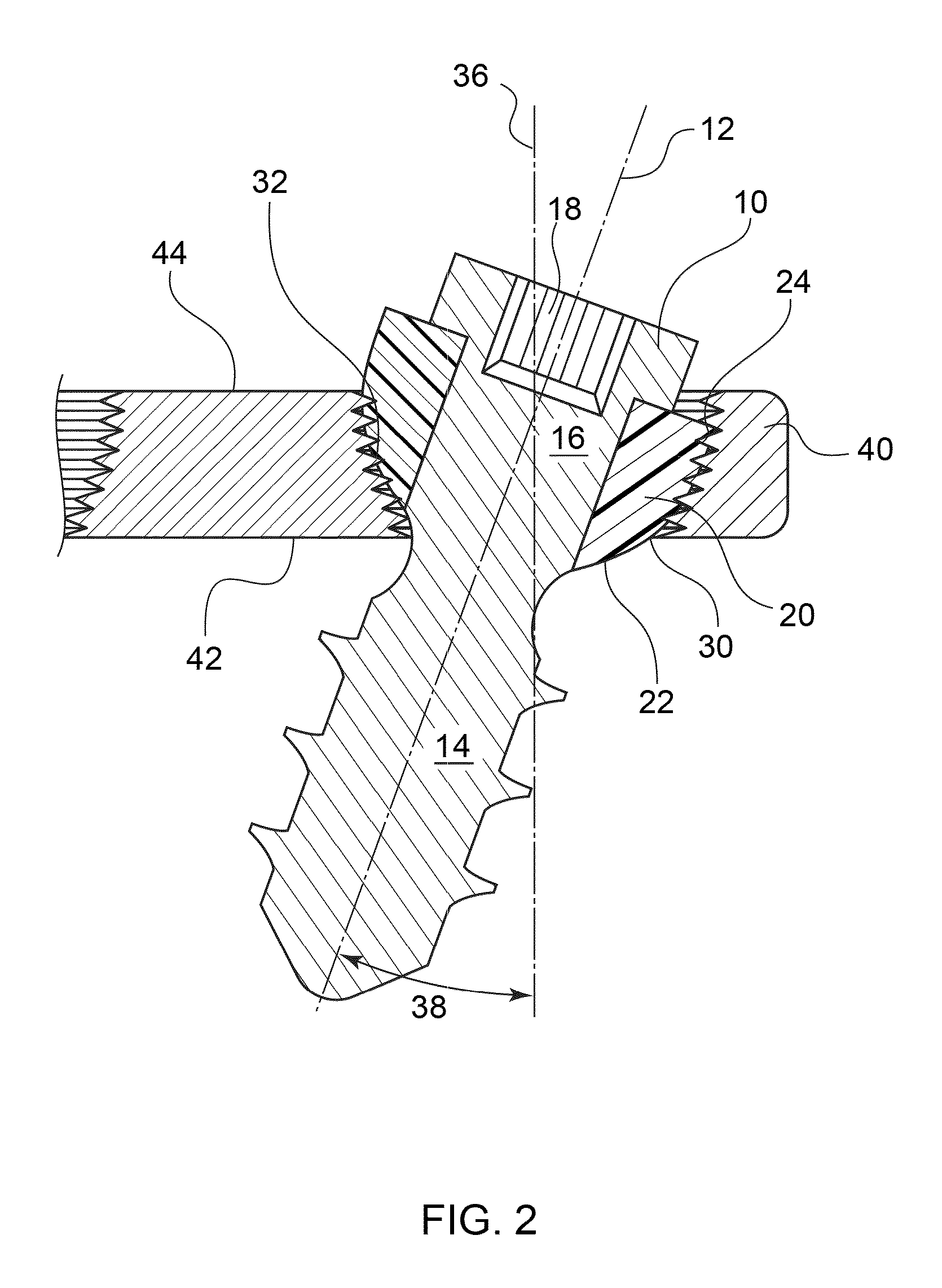Bone plate and bone plate assemblies including polyaxial fasteners
a technology of bone plate and polyaxial fasteners, which is applied in the field of orthopedic fixation devices and bone plate assemblies, can solve the problems of limiting their use, unidirectional locking screws, and shattered bone fragments,
- Summary
- Abstract
- Description
- Claims
- Application Information
AI Technical Summary
Benefits of technology
Problems solved by technology
Method used
Image
Examples
Embodiment Construction
[0056]Embodiments of the present invention provide a fastener 10 for polyaxial fixation in a variety of different types of bone plate openings. FIGS. 1 and 2 illustrate an embodiment of one such fastener. This application uses the terms “fastener” and “screw” interchangeably. Fastener 10 includes a head 16 and a shaft 14 that defines a fastener central axis 12. In FIGS. 1 and 2, the shaft 14 is threaded. The shaft 14 may be fully threaded, partially threaded, comprise a helical blade, and / or may comprise one or more tacks, deployable talons, expandable elements, or so forth. Any feature that allows shaft 14 to engage bone is considered within the scope of this invention and may be referred to generally as a “threaded shaft” for the sake of convenience. It is also possible that shaft 14 is not threaded, so that fastener 10 takes the form of a peg or a pin. This alternative embodiment may be preferred in certain procedures where, for instance, the main goal is to prevent tilting of a ...
PUM
 Login to View More
Login to View More Abstract
Description
Claims
Application Information
 Login to View More
Login to View More - R&D
- Intellectual Property
- Life Sciences
- Materials
- Tech Scout
- Unparalleled Data Quality
- Higher Quality Content
- 60% Fewer Hallucinations
Browse by: Latest US Patents, China's latest patents, Technical Efficacy Thesaurus, Application Domain, Technology Topic, Popular Technical Reports.
© 2025 PatSnap. All rights reserved.Legal|Privacy policy|Modern Slavery Act Transparency Statement|Sitemap|About US| Contact US: help@patsnap.com



